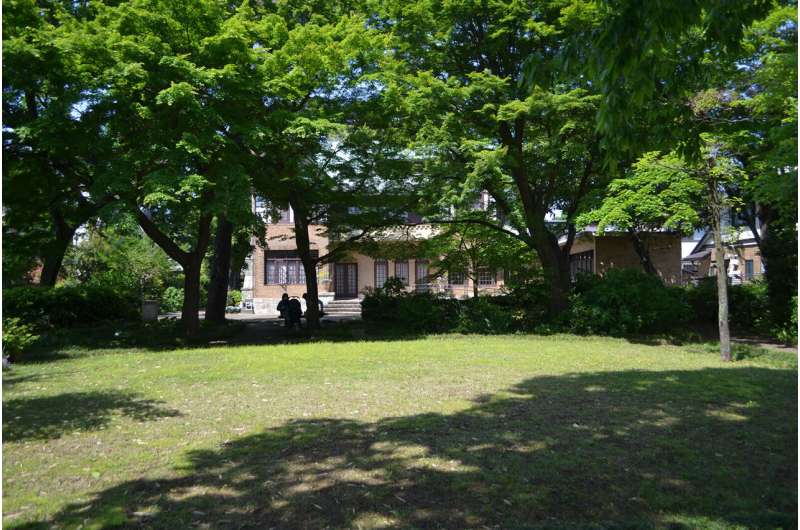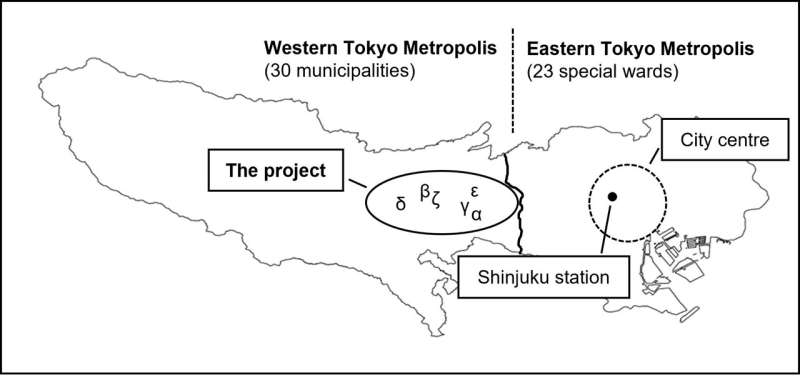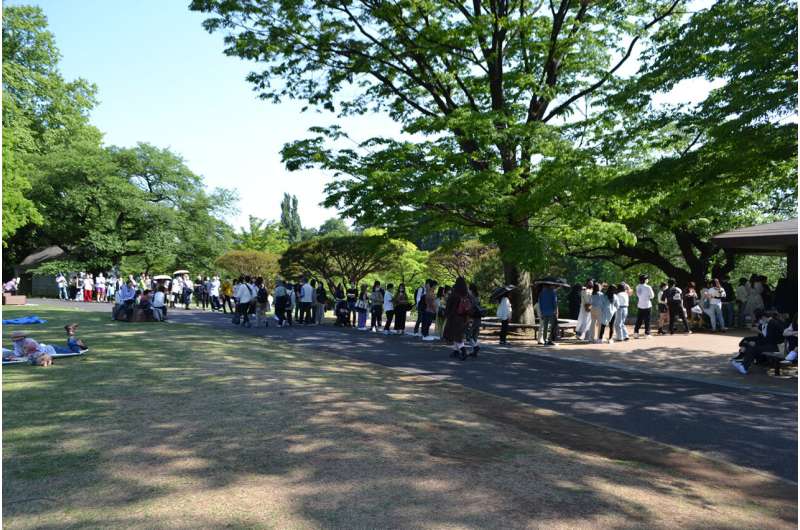A quiet suburban garden in Tokyo (May 2022). Credit: Sho Shimoyamada, 2022
Gardens in Tokyo should work together to disperse visitors and avoid the negative effects of overtourism, suggests a new study at the University of Tokyo.
This research focused on a group of six suburban gardens which had recently joined the Japan Garden Tourism scheme. It found they were unaware of some of the risks associated with becoming a popular tourist destination and that there were a number of barriers to successful collaboration between them and with urban gardens. The study recommended that overvisited and undervisited sites find ways to work together, to learn from each other's experiences and put reciprocal plans in place to spread visitor distribution and create positive tourism experiences for the gardens and visitors.
Tokyo is a mega-city with a seemingly endless sprawl of buildings, power lines and people. But it is also home to many green oases, from large historic parks to suburban meadows and quaint gardens. While some urban parks were dealing with the issue of too many tourists pre-pandemic causing congestion and crowding (overtourism), many of the less-known suburban gardens have been focused on overcoming the opposite problem of a lack of visitors, or so-called undertourism.
However, even those gardens should consider planning now for a possible surge in visitors, according to Project Assistant Professor Sho Shimoyamada from the Graduate School of Arts and Sciences. "Tourism has been identified as a pillar of the Japanese economy. But other than in certain areas, such as Kyoto, Japanese people are not aware of the risk of overtourism. People's minds may be occupied with recovery from the current undertourism situation caused by the pandemic, but not considering the risk of overtourism, which will cause problems in the future."
Shimoyamada interviewed 14 staff members responsible for six suburban Tokyo gardens experiencing undertourism, and three staff members from two urban gardens managing overtourism. The six suburban gardens had recently launched a garden tourism project in October 2020, as part of the Japan Garden Tourism scheme. The scheme aims to promote cooperation amongst tourist attractions, to help entice and disperse visitors by grouping and advertising tourist sites together and running cross-site campaigns, like stamp trails.
Approximate location of the six gardens in suburban Tokyo. Credit: Sho Shimoyamada, 2022
From the interviews, it emerged that the suburban gardens were not yet well informed about certain concepts from tourism research, such as tourism carrying capacity and overtourism. These quiet locations had not had to be concerned about overcapacity, before the pandemic caused the Japanese government to implement caps on visitor numbers depending on garden size.
As might be expected, the number of visitors to most of the gardens which recorded visitor data (4 out of 6) dropped dramatically during this time, further reinforcing the concern that their main focus should be on tackling undertourism. However, one garden saw a dramatic increase in the average daily number of visitors, up 46.8% in 2020 and 19.6% in 2021 compared to 2019. This was one example of how a garden might experience a sudden influx in visitors, which in Japan is especially likely during the popular spring and autumn months.
The interviews also showed that although the suburban gardens were part of the same scheme, it was difficult to build effective collaboration across them. Historical rivalry, separate management companies and differing focuses all added to the challenge. There was also a perceived power imbalance between the suburban and urban gardens, which made it difficult for the suburban gardens to seek help from each other or from the urban gardens, even though it could be mutually beneficial. Interviews with staff from the urban gardens highlighted the serious negative effects of having too many visitors, which brought issues not only to the garden but also the surrounding area, such as noise pollution, damage to historic structures and crowd congestion.
A long queue of visitors waiting to enter a café in an urban garden, in May 2022. Credit: Sho Shimoyamada, 2022
So what could be done to help both Tokyo's suburban and urban gardens thrive with a healthy and sustainable visitor base? "In a post-pandemic period, suburban gardens could be visited by more people if the gardens are presented as an alternative to extremely popular destinations, because some people are fed up with crowds and mass tourism," said Shimoyamada.
"Arguably, overvisitation would not be resolved without help from undervisited destinations. My next step is to collect data from popular urban gardens in Tokyo to investigate what conditions are needed to promote cooperation between urban and suburban gardens. I am speculating that building a reciprocity is a key factor, but managers of popular gardens could also consider exercising their leadership to aid the sustainable development of the wider community. I think a win-win situation is possible."
More information: Sho Shimoyamada 2022. Perception of overtourism and undertourism in garden tourism project in suburban Tokyo, International Conference on Tourism Management and Related Issues, European Institute for Advanced Studies in Management, Sept. 29-30, 2022, University of Valencia, Spain.
Provided by University of Tokyo

























